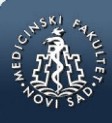md-medicaldata
Main menu:
- Naslovna/Home
- Arhiva/Archive
- Godina 2024, Broj 1
- Godina 2023, Broj 3
- Godina 2023, Broj 1-2
- Godina 2022, Broj 3
- Godina 2022, Broj 1-2
- Godina 2021, Broj 3-4
- Godina 2021, Broj 2
- Godina 2021, Broj 1
- Godina 2020, Broj 4
- Godina 2020, Broj 3
- Godina 2020, Broj 2
- Godina 2020, Broj 1
- Godina 2019, Broj 3
- Godina 2019, Broj 2
- Godina 2019, Broj 1
- Godina 2018, Broj 4
- Godina 2018, Broj 3
- Godina 2018, Broj 2
- Godina 2018, Broj 1
- Godina 2017, Broj 4
- Godina 2017, Broj 3
- Godina 2017, Broj 2
- Godina 2017, Broj 1
- Godina 2016, Broj 4
- Godina 2016, Broj 3
- Godina 2016, Broj 2
- Godina 2016, Broj 1
- Godina 2015, Broj 4
- Godina 2015, Broj 3
- Godina 2015, Broj 2
- Godina 2015, Broj 1
- Godina 2014, Broj 4
- Godina 2014, Broj 3
- Godina 2014, Broj 2
- Godina 2014, Broj 1
- Godina 2013, Broj 4
- Godina 2013, Broj 3
- Godina 2013, Broj 2
- Godina 2013, Broj 1
- Godina 2012, Broj 4
- Godina 2012, Broj 3
- Godina 2012, Broj 2
- Godina 2012, Broj 1
- Godina 2011, Broj 4
- Godina 2011, Broj 3
- Godina 2011, Broj 2
- Godina 2011, Broj 1
- Godina 2010, Broj 4
- Godina 2010, Broj 3
- Godina 2010, Broj 2
- Godina 2010, Broj 1
- Godina 2009, Broj 4
- Godina 2009, Broj 3
- Godina 2009, Broj 2
- Godina 2009, Broj 1
- Supplement
- Galerija/Gallery
- Dešavanja/Events
- Uputstva/Instructions
- Redakcija/Redaction
- Izdavač/Publisher
- Pretplata /Subscriptions
- Saradnja/Cooperation
- Vesti/News
- Kontakt/Contact
 Pasterovo društvo
Pasterovo društvo
- Disclosure of Potential Conflicts of Interest
- WorldMedical Association Declaration of Helsinki Ethical Principles for Medical Research Involving Human Subjects
- Committee on publication Ethics
CIP - Каталогизација у публикацији
Народна библиотека Србије, Београд
61
MD : Medical Data : medicinska revija = medical review / glavni i odgovorni urednik Dušan Lalošević. - Vol. 1, no. 1 (2009)- . - Zemun : Udruženje za kulturu povezivanja Most Art Jugoslavija ; Novi Sad : Pasterovo društvo, 2009- (Beograd : Scripta Internacional). - 30 cm
Dostupno i na: http://www.md-medicaldata.com. - Tri puta godišnje.
ISSN 1821-1585 = MD. Medical Data
COBISS.SR-ID 158558988
UPOTREBA BIOMARKERA U PROCENI ODGOVORA NA ANTIBIOTSKU TERAPIJU KOD SEPTIČNE DECE
/
THE USE OF BIOMARKERS IN THE ASSESSMENT OF THE RESPONSE TO ANTIBIOTIC THERAPY IN CHILDREN WITH SEPSIS
Authors
Anna Uram Benka1,2, Izabella Fabri Galamboš1,2, Nikola Bošković1,2, Nemanja Galetić2, Miroslava Šimovič2, Dragan Turanjanin1,2
1Univerzitet u Novom Sadu, Medicinski fakultet Novi Sad, Srbija
2Institut za zdravstvenu zaštitu dece i omladine Vojvodine, Novi Sad, Srbija
UDK: 616.94-076:577.112 615.28
The paper was received / Rad primljen: 20.04.2024.
Accepted / Rad prihvaćen: 20.05.2024.
Correspondence to:
Dragan Turanjanin
Braće Popović 8, Novi Sad;
tel: 065 3503609
e-mail: dturanjanin@icloud.com
Sažetak
Uvod. Sepsa je važan uzrok morbiditeta i mortaliteta u dečijem uzrastu. Procenjuje se da je infekcija najčešći uzrok smrti kod dece ispod 5 godina starosti. Kod dece, bez tretmana, sepsa vodi smrtnom ishodu u 80% slučajeva. Tri često upotrebljavana biomarkera za dijagnostiku i monitoring sepse su C-reaktivni protein, prokalcitonin i presepsin. Samostalno, kao i u kombinaciji sa kliničkom slikom, mogu značajno doprineti ranom prepoznavanju i preduzimanju i praćenju adekvatne antibiotske terapije. Cilj. Cilj naše studije bio je da se utvrdi ishod lečenja i uticaj primene antibiotske terapije na kretanje vrednosti biomarkera i postojanje razlika u kretanju biomarkera kod dece različitog uzrasta obolele od sepse. Materijal i metode. Retrospektivno istraživanje je obuhvatilo ukupno 29 bolesnika koji su razvili akutnu generalizovanu infekciju sa znacima sepse i lečeni na Odeljenju za hiruršku intenzivnu terapiju u periodu od 1.1.2021. do 31.12.2021. godine. Vrednosti razmatranih parametara koji su uzete u obzir su bile određivane inicijalno, te nakon 24h, 48h i 72h od pojave infekcije. Rezultati. Najčešći ukupno određivani biomarker je bio C-reaktivni protein (47.60%), zatim prokalcitonin (34.06%), a najređe presepsin (19.70%). Ne postoji statistički značajna razlika (p>0.05) u vrednostima C-reaktivnog proteina i prokalcitonina određivanih inicijalno i nakon 72h, bez obzira na korekciju antibiotske terapije. Zaključak. Promena antibiotske terapije dovodi do postepenog pada vrednosti C-reaktivnog proteina i prokalcitonina kod novorođenčadi i kod dece starosti do 2 godine, ali ne i kod starije dece.
Ključne reči:
Antibiotici; C-reaktivni protein; Prokalcitonin; Sepsa.
Abstract
Introduction. Sepsis is an important cause of morbidity and mortality in children. It is estimated that infection is the most common cause of death in children under 5 years of age. Without treatment, sepsis leads to death in 80% of cases. Three commonly used biomarkers for the diagnosis and monitoring of sepsis are C-reactive protein, procalcitonin and presepsin. Independently, as well as in combination with the clinical picture, they can significantly contribute to early recognition and the undertaking and monitoring of adequate antibiotic therapy. The aim. The aim of our study was to determine the outcome of treatment and the impact of antibiotic therapy on the trend of biomarker values, and the existence of differences in the trend of biomarkers in children of different ages. Material and methods. The retrospective study included a total of 29 patients who developed an acute generalized infection with signs of sepsis and were treated in the Surgical Intensive Care Unit in the period from 01.01.-31.12.2021. The values of the considered parameters were noted initially, and after 24h, 48h and 72h from the onset of infection. Results. The most common overall used biomarker was C-reactive protein (47.60%), followed by procalcitonin (34.06%), and than presepsin (19.70%). There is no statistically significant difference (p>0.05) in the initial values of C-reactive protein and procalcitonin and after 72h, regardless of antibiotic correction. Conclusion. Antibiotic therapy correction leads to a decrease in C-reactive protein and procalcitonin values in children up to 2 years of age, but not in older children.
Key words:
Antibiotics; C-reactive protein; Procalcitonin; Sepsis.
References:
- Wiens MO, Kissoon N, Holsti L. Challenges in pediatric post-sepsis care in resource limited settings: a narrative review. Transl Pediatr. 2021;10(10):2666-77.
- World Helath Organization Global Health Observatory. Causes of child mortality. 2024 www.who.int/gho/child_health/mortality/causes/en
- Prusakowski MK, Chen AP. Pediatric Sepsis. Emerg Med Clin North Am. 2017;35(1):123-38.
- Angus DC, Linde-Zwirble WT, Lidicker J, Clermont G, Carcillo J, Pinsky MR. Epidemiology of severe sepsis in the United States:analysis of incidence, outcome, and associated costs of care. Crit Care Med. 2001;29:1303-10.
- Singer M, Deutschman CS, Seymour CW, Shankar-Hari M, Annane D, Bauer M. et al. The Third International Consensus Definitions for Sepsis and Septic Shock (Sepsis-3). JAMA. 2016;315:801–10.
- Arina P, Singer M. Pathophysiology of sepsis. Curr Opin Anaesthesiol. 2021;34(2):77-84.
- Pieren DKJ, Boer MC, de Wit J. The adaptive immune system in early life: The shift makes in count. Front Immunol. 2022;13:1031924.
- Carrol ED, Ranjit S, Menon K, Bennett TD, Sanchez-Pinto LN, Zimmerman JJ, et al. Operationalizing Appropriate Sepsis Definitions in Children Worldwide: Considerations for the Pediatric Sepsis Defionition Taskforce. Pediatr Crit Care Med. 2023;24(6):e263-e271.
- Stoll BJ, Puopolo KM, Hansen NI, Sánchez PJ, Bell EF, Carlo WA, et al. Early-Onset Neonatal Sepsis 2015 to 2017, the Rise of Escheria coli, and the Need for Novel Prevention Strategies. JAMA Pediatr. 2020;174(7):e200593.
- Posfay-Barbe KM, Wald ER. Listeriosis. Semin Fetal Neonatal Med. 2009;14(4):228-33.
- Coggins SA, Glaser K. Updates in Late-Onset Sepsis: Risk Assessment, Therapy, and Outcomes. Neoreviews. 2022;23(11):728-55.
- Hartman ME, Linde-Zwirble WT, Angus DC, Scott Watson R. Trends in the epidemiology of pediatric severe sepsis- Pediatr Crit Care Med. 2013;14(7):686-93.
- Mierzchała-Pasierb M, Lipínska-Gediga M. Sepsis diagnosis and monitoring – procalcitonin as standard, but what next? Anaesthesiol Intensive Ther. 2019;51(4):299-305.
- Chaudhuri PK, Ghosh A, Sinha V, Singh BK, Singh M, Lugova H, et al. The Role of C-reactive Protein Estimation in Determining the Duration of Antibiotic Therapy in Neonatal Sepsis. Cureus. 2022;14(10):e30211.
- Tian BWCA, Agnoletti V, Ansaloni L, Coccolini F, Bravi F, Sartelli M, et al. Management of Intra-Abdominal Infections: The Role of Procalcitonin. Antibiotics (Basel). 2023;12(9):1406.
- Liang J, Cai Y, Shao Y. Comparison of presepsin and Mid-regional pro-adrenomedullin in the diagnosis of sepsis or septic shock: a systematic review and meta-analysis. BMC Infect Dis. 2023;23(1):288.
- Gude SS, Peddi NC, Vuppalapati S, Gopal SV, Ramesh HM, Guse SS. Biomarkers of Neonatal Sepsis: From Being Mere Numbers to Becoming Guiding Diagnostics. Cureus. 2022;14(3):e23215.
- Geroteo JS, Levy M, Gotchac J, Brissaud O, Dauger S. Fluid bolus therapy in pediatric sepsis: a narrative review. Eur J Med Res. 2022;27(1):246.
- Angus DC, Wax RS. Epidemiology of sepsis:an update. Critical Care Medicine. 2001; 29(7):109-116.
- Watson RS, Carcillo JA. Scope and epidemiology of pediatric sepsis. Pediatric Critical Care Medicine. 2005;6(3):3-5.
- Lakbar I, Einav S, Lalevée N, Martin-Loeches I, Pastene B, Leone M. Interactions between Gender and Sepsis-Implications for the Future. Microorganisms. 2023;11(3):746.
- Garcia-Gomez E, Gonzalez-Pedrajo B, Camacho-Arroyo I. Role of sex steroid hormones in bacterial-host interactions. Biomed Res Int. 2013;2013:928-9.
- Rudd KE, Johnson SC, Agesa KM, Shackelford KA, Tsoi D, Kievlan DR, et al. Global, regional, and national sepsis incidence and mortality, 1990-2017: analysis for the Global Burden of Disease Study. Lancet. 2020;395(10219):200-11.
- Martin GS, Mannino DM, Eaton S, Moss M. The epidemiology of sepsis in the United States from 1979 through 2000. New England Journal of Medicine. 2003;348(16):1546-54.
- Kaplan JM, Wong HR. Biomarker discovery and development in pediatric critical care medicine. Pediatr Crit Care Med. 2011;12(2):165-73.
- Karlsson S, Heikkinen M, Pulkki K, Kolho E. Predictive value of procalcitonin decrease in patients with severe sepsis: a prospective observational study. Critical Care. 2010;14(6):R205.
- Mokline A, Sboui S, Saad MB, Eljemi I, Gasri B, Thabet L, et al. [Procalcitonin: The Ideal Biomarker To Guide Intitiation, Change and Withdrawal of Antibiotics in Septic Burn Patients?]. Ann Burns Fire Disasters. 2023;36(2):125-31.
- Borowski S, Schors I, Bar-Meir M. Time from symptom onset may influence C-reactive protein utility in the diagnosis of bacterial infections in the NICU. BMC Pediatr. 2022;22(1):715.
- Memar MY, Baghi HB. Presepsin: A promising biomarker for the detection of bacterial infections. Biomed Pharmacother. 2019;111:649-56.
- Urbonas V, Eidukaite A. Tamuliene I. The predictive value of soluble biomarkers and procalcitonin in the detection of bacteremia and sepsis in pediatric oncology patients with chemotherapy-induced febrile neutropenia. Cytokine. 2013;62:34-7.
PDF: 02-Uram Benka A. et al MD-Medical Data 2024 16(2) 087-092.pdf
 Medicinski fakultet
Medicinski fakultet